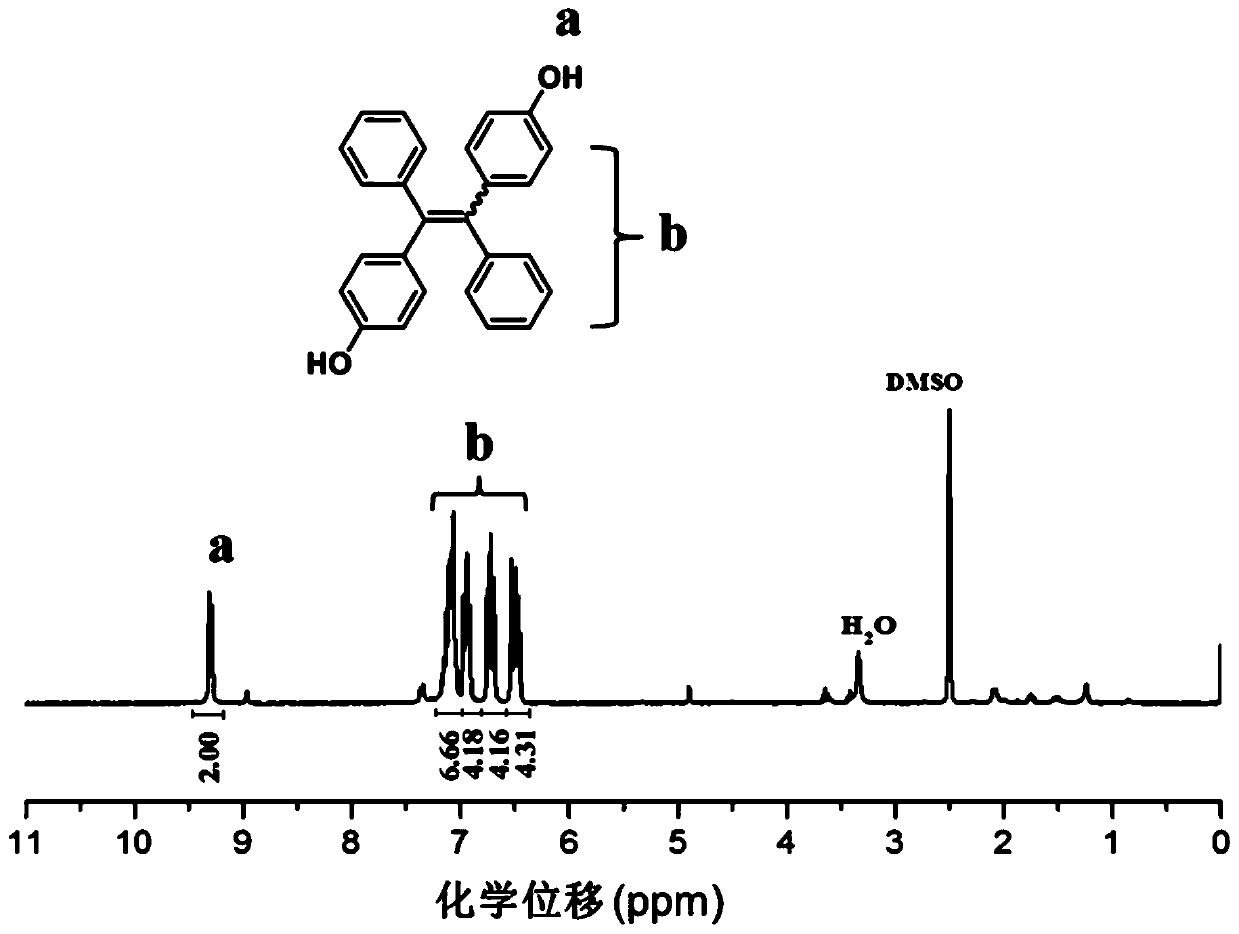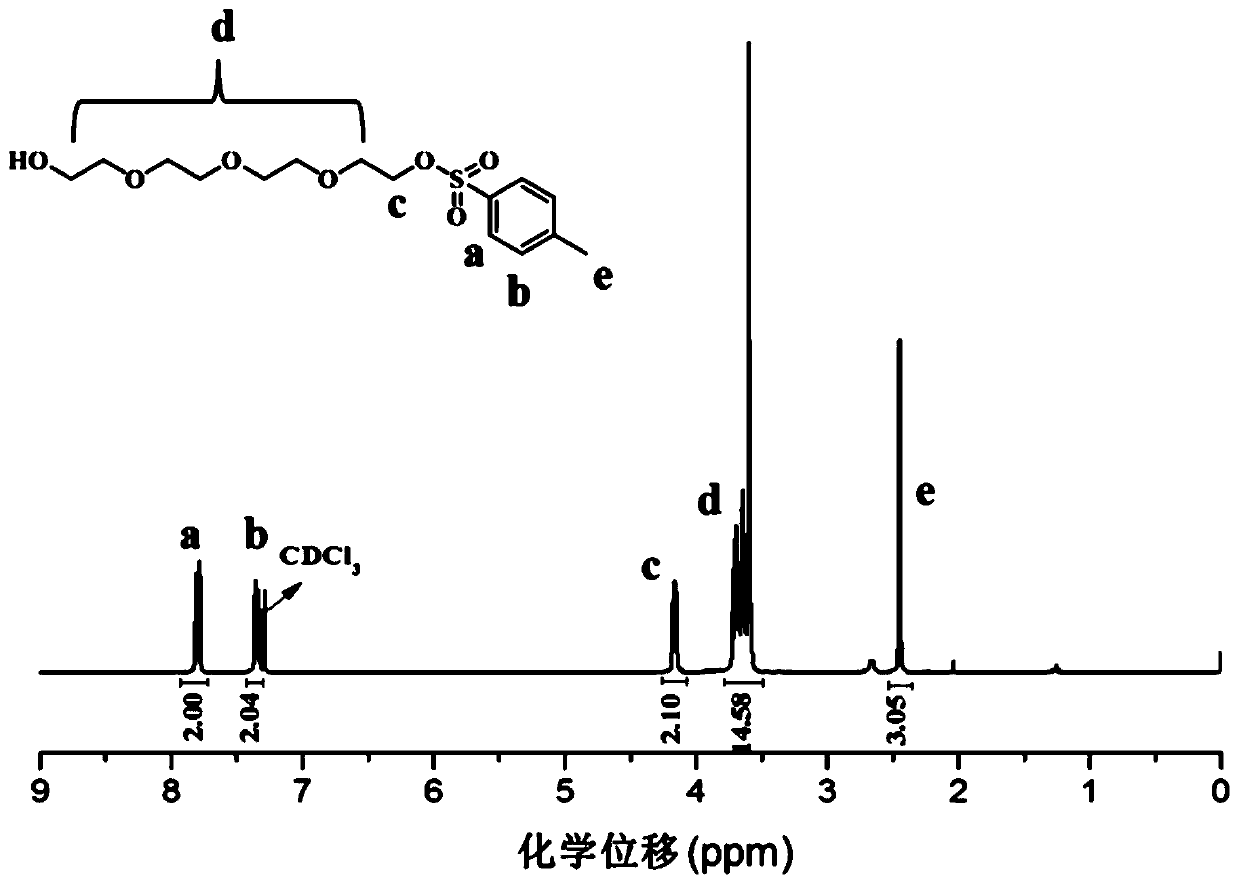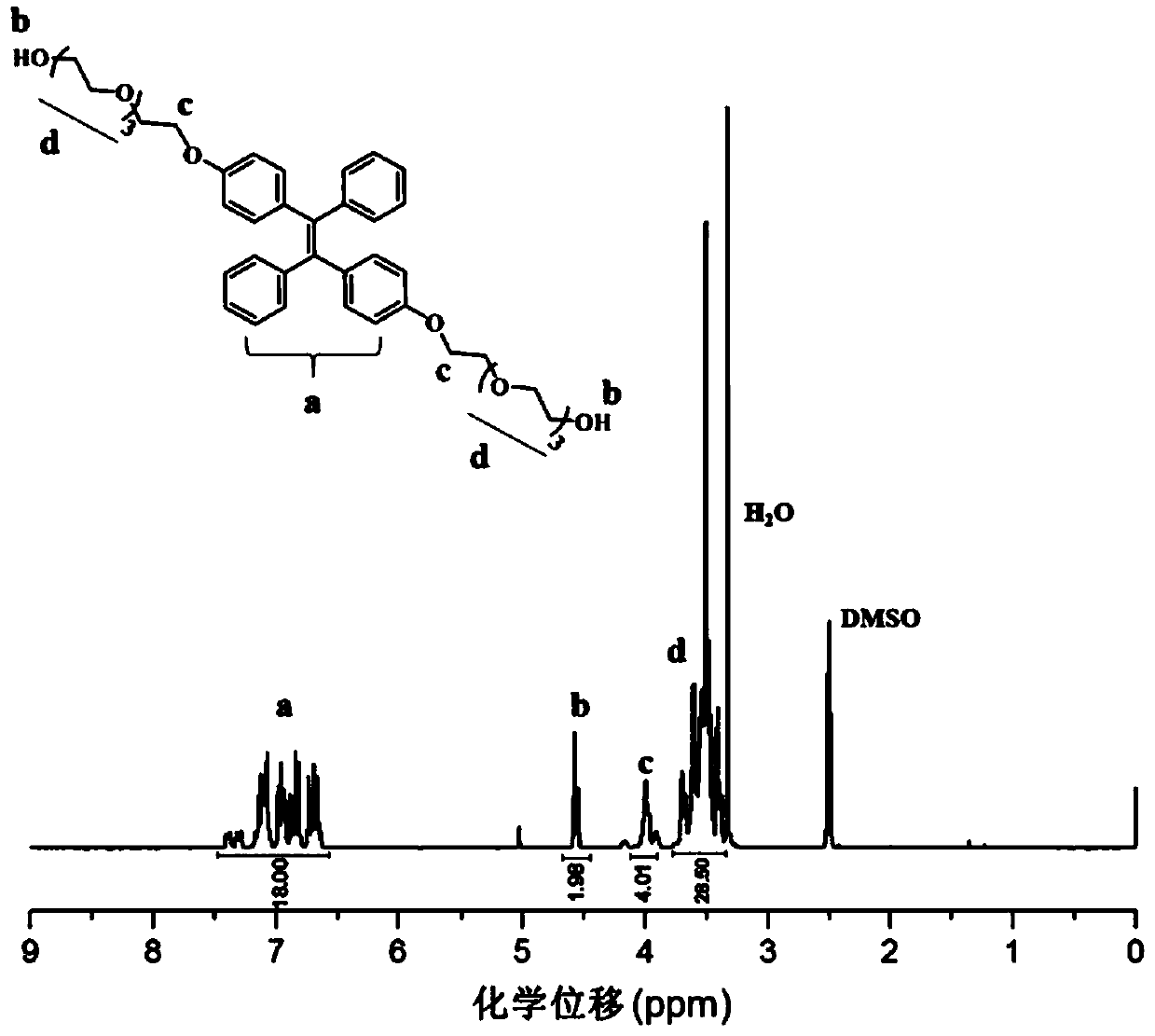Preparation and application of polymer gel fluorescent probe based on azo reduction response
A polymer and azobenzene technology, which is applied in the preparation and application of polymer gel fluorescent probes, can solve the problems of less research on hydrogel drug-loading systems, and achieve high sensitivity
- Summary
- Abstract
- Description
- Claims
- Application Information
AI Technical Summary
Problems solved by technology
Method used
Image
Examples
Embodiment 1
[0082] The preparation method of the cross-linking agent based on azobenzene reduction responsiveness comprises the following steps:
[0083] 1. Synthesis of TPE-2OH:
[0084] Add zinc powder (45.63g, 0.70mol) and 4-hydroxybenzophenone (34.75g, 0.175mol) to a 500mL dry three-necked flask, add about 300mL dry THF to dissolve, place in an ice bath and stir with argon . Titanium tetrachloride (46.20 mL, 0.42 mol) was slowly added dropwise to the mixture, and after the dropwise addition, the reaction was continued in an ice bath for 0.5 h, and then returned to room temperature for another 0.5 h. Then transfer to an oil bath and gradually heat up to reflux. After 24 hours, the reaction was stopped, returned to room temperature, suction filtered, concentrated by rotary evaporation, poured into 10wt% potassium carbonate solution and stirred, a large amount of solid was produced, and a yellow filtrate was obtained by suction filtration. The filtrate was dried and concentrated, and ...
Embodiment 2
[0098] A method for preparing a hydrogel fluorescent probe with azobenzene reduction responsiveness, comprising the following steps:
[0099] A certain proportion of PEGMA (500 g / mol) and AAc, the cross-linking agent TPE-2TEGAzoMA prepared in Example 1, the initiator AIBN and the solvent DMF were added to a 10 mL ampoule. Wherein, the molar ratio of PEGMA and AAc is 1-8:1, the cross-linking agent based on azobenzene accounts for 0.005-0.03 of the total moles of PEGMA and AAc, and the AIBN accounts for 0.002 of the total moles of PEGMA and AAc. After mixing evenly, seal the tube with nitrogen to remove oxygen, place it in an oil bath at 70°C for about 5 hours, take it out, invert the reaction bottle and no liquid flows down, and then obtain the polymer P(PEGMA-co -AAc), its synthetic route is as follows:
[0100]
[0101] Using THF as solvent, the polymer P(PEGMA-co-AAc) was purified by fat Soxhlet extraction for 24 hours to remove the residual reactant and solvent DMF. Th...
Embodiment 3
[0116] Embodiment three packs the preparation of carrying bovine serum albumin (BSA) hydrogel
[0117] Soak 19.2 mg of the polymer P (PEGMA-co-AAc) xerogel prepared in Example 2 in a bovine serum albumin (BSA) solution containing 5 mg / mL, and when it reaches swelling equilibrium, take out the gel and use Wash the surface of the gel with a small amount of high-purity water, and then place it in an oven at 40°C for drying until the weight does not change, and then the drug-loaded xerogel can be obtained.
[0118] The fluorescence characteristic peaks and the UV-Vis spectrophotometer are used to detect the drug loading rate of the xerogel conveniently and effectively, respectively, and the drug release can also be effectively monitored through the change of the UV absorption peak of BSA. The method is as follows:
[0119] (1) Determination of BSA standard curve:
[0120] Prepare a BSA buffer solution with a concentration of 1 mg / mL, pipette 3 mL into a cuvette for UV testing, an...
PUM
 Login to View More
Login to View More Abstract
Description
Claims
Application Information
 Login to View More
Login to View More - R&D
- Intellectual Property
- Life Sciences
- Materials
- Tech Scout
- Unparalleled Data Quality
- Higher Quality Content
- 60% Fewer Hallucinations
Browse by: Latest US Patents, China's latest patents, Technical Efficacy Thesaurus, Application Domain, Technology Topic, Popular Technical Reports.
© 2025 PatSnap. All rights reserved.Legal|Privacy policy|Modern Slavery Act Transparency Statement|Sitemap|About US| Contact US: help@patsnap.com



